You can read Part 1, “Why We Need To Legitimize Modern Hebrew,” here.
Since Hebrew programs offered in seven area public high schools are experiencing a crisis of enrollment and qualified/certified Hebrew teachers, the community response, with its best intentions, has been to advocate for saving their programs at school board meetings.
The more I explore, though, the clearer it becomes that Hebrew teacher and student shortages are a symptom of a bigger dilemma that no amount of clamoring will resolve. If we’re able to save a high school Hebrew program from the chopping block for one more year, this temporary solution will only delay the next crisis, and the program will soon end up at-risk again. Why are we having these Hebrew program stability issues?

THE CRITIQUE: Because from what I’ve seen and heard so far, the quality & consistency of these high school Hebrew offerings varies widely. And these variations aren’t unique to public high school Hebrew programs; they are, unfortunately, ubiquitous.
Some high school programs relegate the fundamental input job to a Hebrew online computer course. Some rely on a dry, grammar-heavy & outmoded text book. Some are so stretched and strained that they don’t allow a teaching setup that meets the needs of individual students and levels; still others focus on Israeli culture and Jewish identity (delivered in English), punting on their stated goal: Hebrew language proficiency. Many teachers dedicate their precious instructional minutes to teaching Hebrew linguistics – grammatical and syntactical features of the language, with a heavy emphasis on accuracy over meaning – at the expense of copious Hebrew input to build acquisition for real communication. Most don’t scaffold the language enough for the novice to comprehend messages, or map meaning of individual words. The strongest tool in the Second Language Acquisition box, READING, isn’t leveraged effectively. No Hebrew curriculum that I know of focuses on students acquiring a corpus of the highest frequency words, to afford greatest coverage. This last strategy eluded me for the first two decades of my Spanish teaching career 😳 !
THE PROPOSED SOLUTION: With the kind of material and community support we have at our disposal, we can, no doubt! shore up our Hebrew offerings. Not just the public high school programs, but all our programs. We want the highest quality early start – long sequence learning (acquiring), so let’s start thinking about coordinating the entire progression. Let’s create pre-K to 8th grade programs so effective and enjoyable that a considerable number of students will elect to continue taking Modern Hebrew in high school, and beyond! It’s not too great or too difficult a goal to fathom or accomplish. It will take energy and will, but, speaking from my experience, it’s definitely doable!

Here’s my first draft Road Map to Improving Modern Hebrew Instruction:
A. TRAIN/RE-TRAIN TEACHERS:
I was a veteran Spanish language teacher for nearly 20 years before I retooled my teaching with Comprehensible Input (T/CI). I attended workshops, got support from my administration and department colleagues (we all retrained together), and tinkered in my classroom. I read, watched demonstration videos, went to conferences, was coached by master teachers, and participated in two Professional Learning Communities (PLCs). I also visited CI-based classrooms for the best training of all – live observation and debriefing with the teacher. All these teacher-to-teacher experiences knit me into a network of inspired and inspiring colleagues, from whom I continue to learn.
I propose an 8-10 hour (total) beginners’ workshop (3-5 hours per day?) with sessions in Rationale (Second Language Acquisition) and Comprehensible Input strategies, coached skills practice, and resource assessment & development, for all stakeholders – teachers, administrators, Hebrew camp counselors & directors, etc. Such groundwork will get us ‘all on the same page,’ ready to dive into CI strategies in our classrooms/learning environments. (Read about the 8-hour Hebrew teacher training I led this summer.)
I hope to organize and lead broader Hebrew trainings this academic year, aimed at any Hebrew language teachers/levels and attended by all aforementioned stakeholders, as the basic principles (for absolute beginners through intermediate level students of any age) are the same. It would be wonderful to bring different area institutions together to host a regional training, thereby building teacher and administrator networks!
Once we are all enlightened on how the brain acquires language, and we can discern which strategies we need to dump, keep or add, we’ll be ready to…
B. ORGANIZE FOR ONGOING SUPPORT:
This step is part & parcel to training, and helps insure shared vision, consistency, and a common language experience for our students, as well as resources & materials for teachers. As we train, we group Hebrew teachers by the grade/level they teach, to build networks of colleagues across the area/country/world:
 *Elementary Pre-K to 2nd grade & 3rd to 5th grade sub-groups
*Elementary Pre-K to 2nd grade & 3rd to 5th grade sub-groups
*Middle school to junior high, 6th-8th grade
*High school & adult learners
(We can combine above groupings for many aspects of training.)
Next we form and/or participate in online users’ groups (i.e., moreTPRS Yahoo! group, Facebook ifltntprsciteaching, shared Google docs, more blogs and such,) so that teachers can support each other, sharing documents, questions and reflections in user-friendly, archive-able and searchable platforms. A YouTube channel of Hebrew teacher demonstration videos could be a tremendous resource! I’m happy to start building a repository on my blog, but let’s hope we bust out and need a different ‘file cabinet,’ because my blog can’t handle the volume!
Broad, effective, ongoing training, plus support and mentorship, will set us on the path toward reclaiming real Hebrew proficiency-oriented classrooms. My (day-job) grades 1-8 World Language department was able to completely shift our teaching, and re-invigorate our classrooms, in a matter of months! Most of us felt the earth move, as our students leaned in, and our administrators/evaluators basked in the positive feedback streaming in from their parents. Best of all, with such enjoyable strategies as collaborative story-asking, dramatization, and drawing, our teachers were eager to improve our CI delivery skills, experiment with different formats, and mine students’ ideas and preferences while building scenes and stories together. Now, work is more fun for all of us, and we email and text each other regularly, sharing funny incidents and ideas from our classroom story-spinning. (After the Big Cubs Win, my students seeded the idea, and we collaborated on a Spanish re-telling of the ‘Three Bears,’ called, ‘The 3 Chicago Cubs,’ aka, ‘Los Tres Cachorros de Chicago.’)
Ongoing support also means regularly sending our teachers to training (meetings, workshops, conferences) for sessions in additional CI strategies, networking and coaching. Our field is dynamic and exciting! Some sessions may focus on integrating video or electronic text activities (i.e., Textivate), others on incorporating authentic literature, art and music; still others may focus on working with pre- and emergent literacy learners.


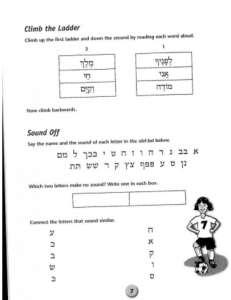
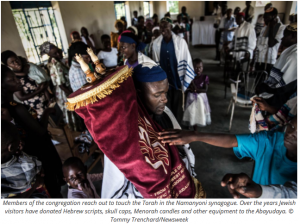
 I sent this letter of invitation below, explaining my Hebrew educational reform project to family, friends, acquaintances, teachers, administrators, and organizations. If you know anyone interested in improving the Hebrew learning (acquiring) experience and outcomes for students of all ages, please read and forward this letter!
I sent this letter of invitation below, explaining my Hebrew educational reform project to family, friends, acquaintances, teachers, administrators, and organizations. If you know anyone interested in improving the Hebrew learning (acquiring) experience and outcomes for students of all ages, please read and forward this letter! Here’s the letter to circulate, and thanks in advance for helping get the word out on improving Hebrew instruction:
Here’s the letter to circulate, and thanks in advance for helping get the word out on improving Hebrew instruction: Plus, I really wasn’t aware of the turmoil swirling around the Hebrew programs in my own back yard!
Plus, I really wasn’t aware of the turmoil swirling around the Hebrew programs in my own back yard!
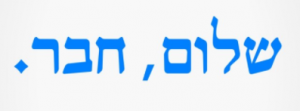 Lamentably, it looks as though Evanston Township High School, the first public high school in the area to offer Hebrew, may phase out its almost 50-year-old Hebrew program at the end of this academic year. (Read
Lamentably, it looks as though Evanston Township High School, the first public high school in the area to offer Hebrew, may phase out its almost 50-year-old Hebrew program at the end of this academic year. (Read 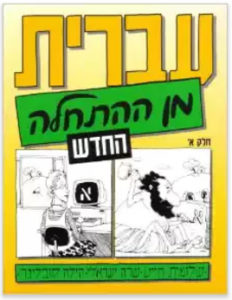
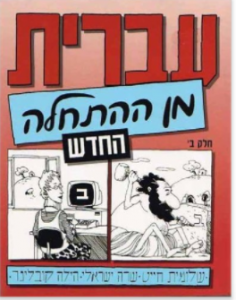 *Since they don’t yet exist, teachers can’t rely on Hebrew-specific teaching support networks, for coordination of Hebrew pedagogy and instruction;
*Since they don’t yet exist, teachers can’t rely on Hebrew-specific teaching support networks, for coordination of Hebrew pedagogy and instruction;
